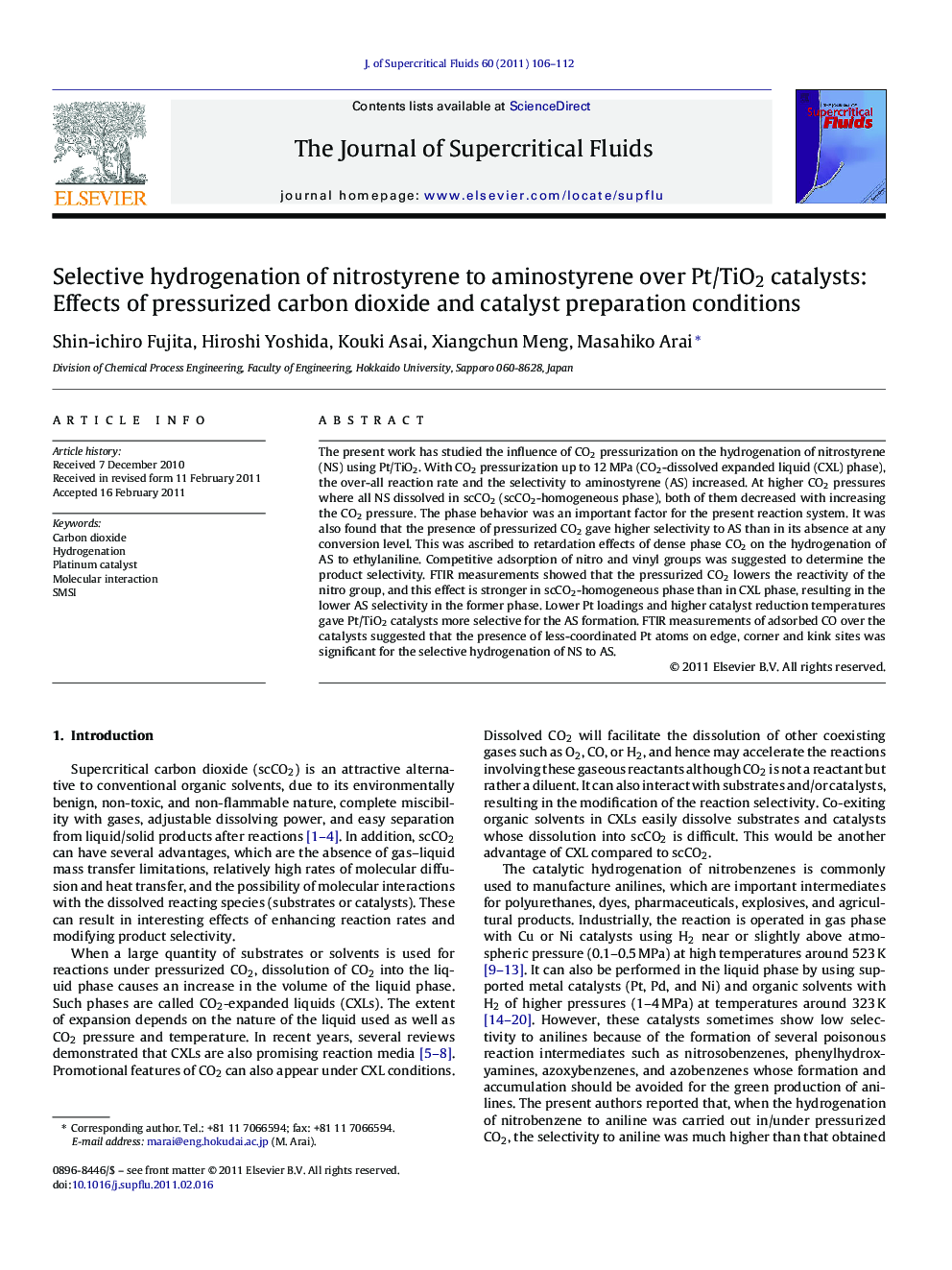| Article ID | Journal | Published Year | Pages | File Type |
|---|---|---|---|---|
| 231084 | The Journal of Supercritical Fluids | 2011 | 7 Pages |
The present work has studied the influence of CO2 pressurization on the hydrogenation of nitrostyrene (NS) using Pt/TiO2. With CO2 pressurization up to 12 MPa (CO2-dissolved expanded liquid (CXL) phase), the over-all reaction rate and the selectivity to aminostyrene (AS) increased. At higher CO2 pressures where all NS dissolved in scCO2 (scCO2-homogeneous phase), both of them decreased with increasing the CO2 pressure. The phase behavior was an important factor for the present reaction system. It was also found that the presence of pressurized CO2 gave higher selectivity to AS than in its absence at any conversion level. This was ascribed to retardation effects of dense phase CO2 on the hydrogenation of AS to ethylaniline. Competitive adsorption of nitro and vinyl groups was suggested to determine the product selectivity. FTIR measurements showed that the pressurized CO2 lowers the reactivity of the nitro group, and this effect is stronger in scCO2-homogeneous phase than in CXL phase, resulting in the lower AS selectivity in the former phase. Lower Pt loadings and higher catalyst reduction temperatures gave Pt/TiO2 catalysts more selective for the AS formation. FTIR measurements of adsorbed CO over the catalysts suggested that the presence of less-coordinated Pt atoms on edge, corner and kink sites was significant for the selective hydrogenation of NS to AS.
Graphical abstractFigure optionsDownload full-size imageDownload as PowerPoint slideHighlights► We studied hydrogenation of nitrostyrene under and in pressurized CO2. ► The overall reaction rate is enhanced under pressurized CO2 up to 12 MPa. ► CO2 lowers the reactivity of the nitro group but not that of the vinyl group. ► CO2 retards the hydrogenation of aminostyrene at high pressures. ► The Pt surface nature of Pt/TiO2 changes the product selectivity.
